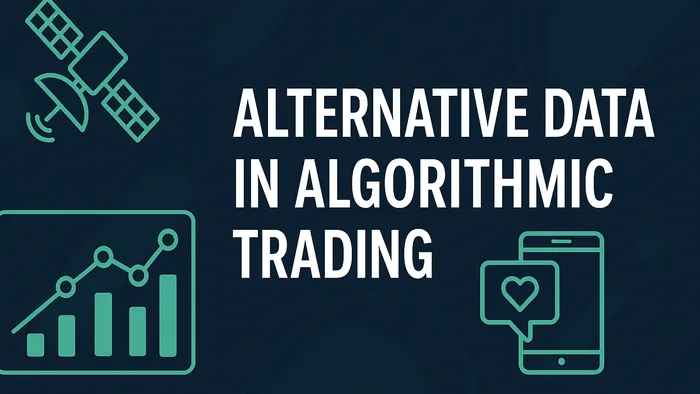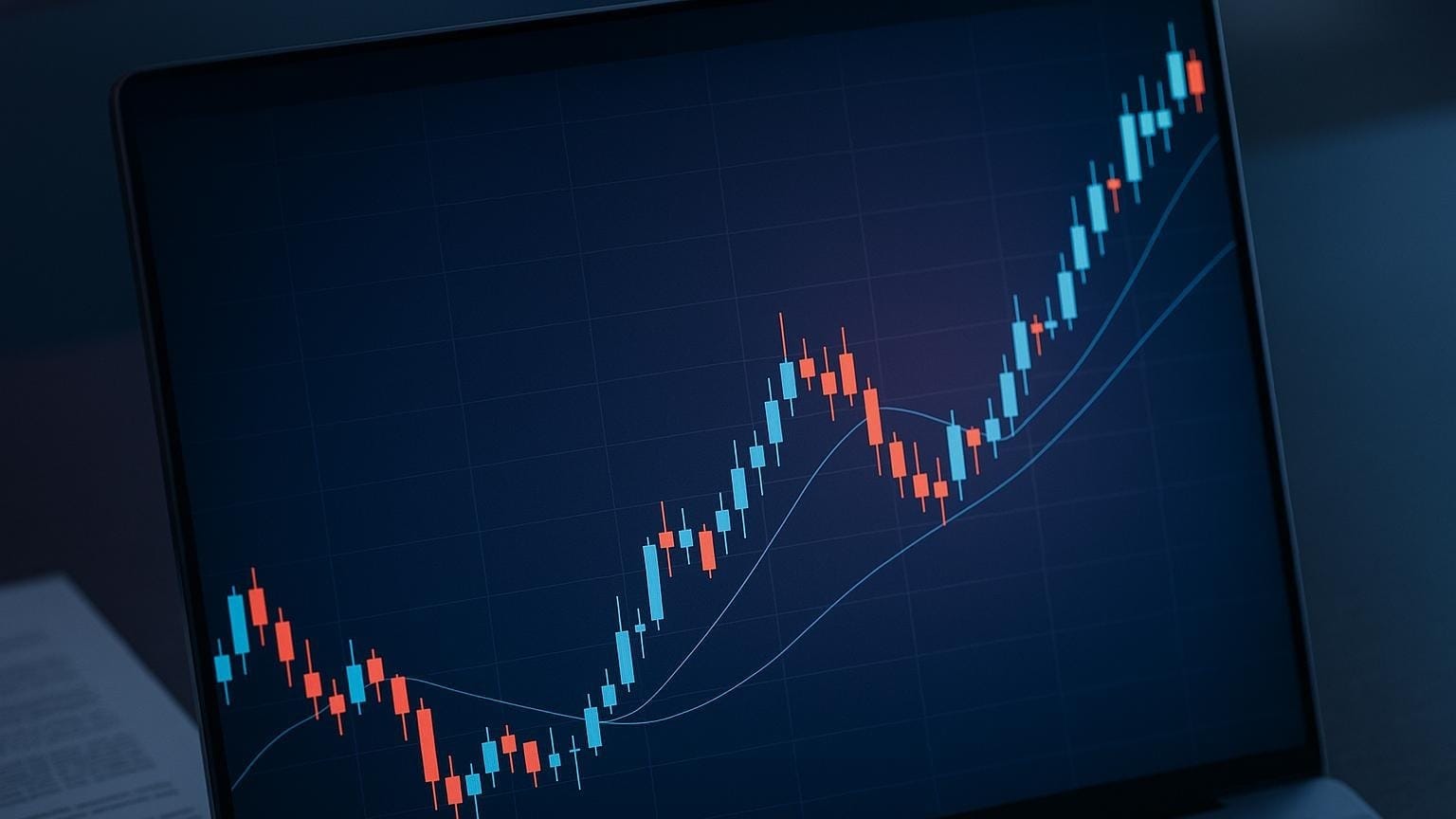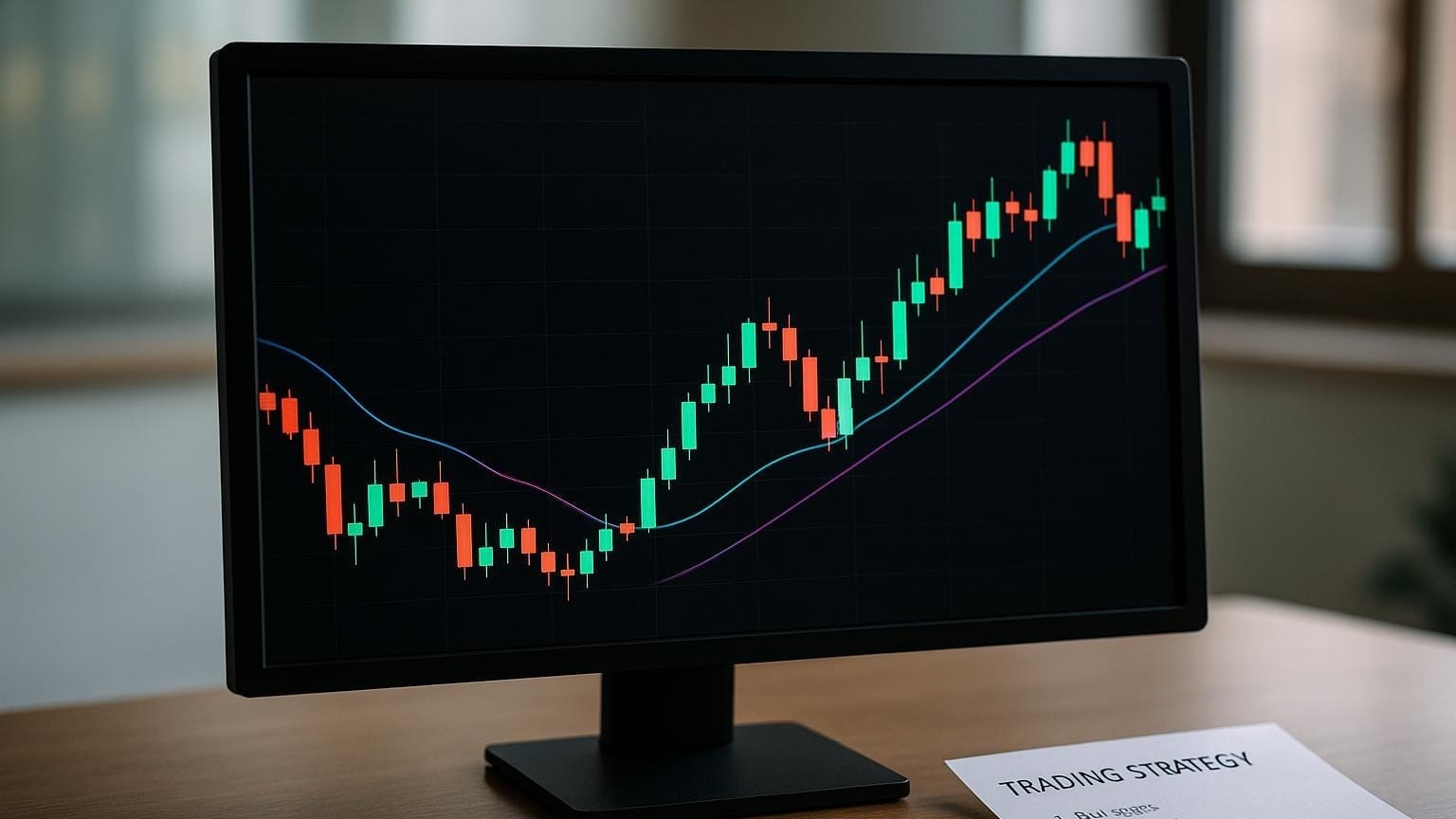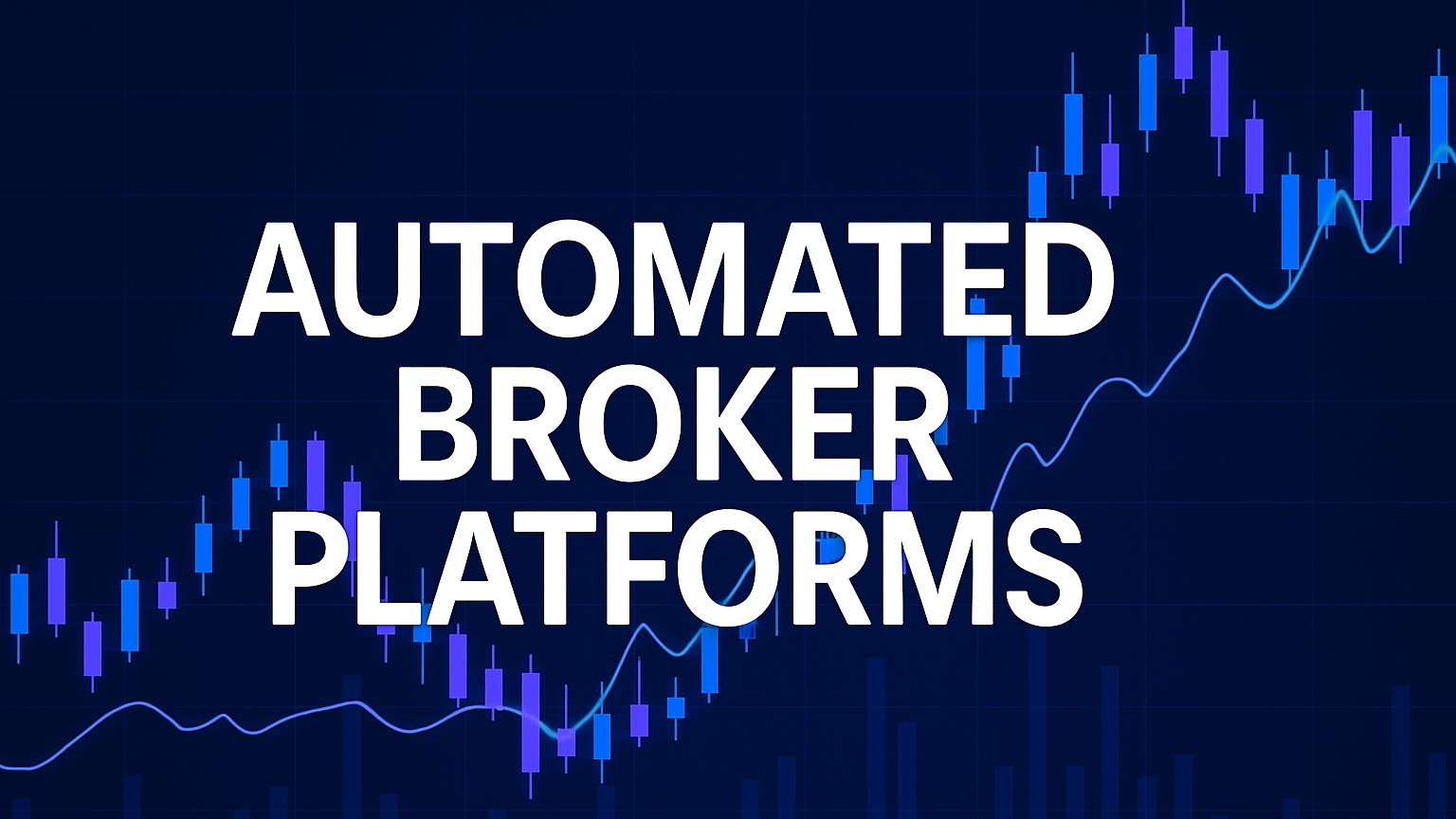Explore how alternative data is transforming algorithmic trading with insights from social media, satellite imagery, and more.
Alternative data is reshaping algorithmic trading by offering insights beyond traditional financial metrics, here is what you need to know:
- What is Alternative Data? It is nontraditional information like social media sentiment, satellite imagery, and credit card transactions, providing real-time, predictive insights.
- Why it Matters: 65% of hedge funds use it to outperform competitors, achieving up to 3% higher annual returns.
- Key Data Types: Social media sentiment (87% forecast accuracy), transaction data (10% improved predictions), and satellite imagery (18% better earnings estimates).
- How to Use It: Combine it with traditional data, clean and validate for accuracy, and rigorously test strategies.
| Data Type | Forecast Accuracy | Applications |
|---|---|---|
| Social Media Sentiment | 87% | Trend detection, market sentiment |
| Transaction Data | 10% improvement | Consumer behavior, revenue predictions |
| Satellite Imagery | 18% better estimates | Supply chains, retail traffic monitoring |
Alternative data is expected to grow into a $273 billion market by 2032, start integrating it now to stay competitive.
How hedge funds are using consumer data to get a trading edge
Top Alternative Data Sources
Let us take a closer look at some of the most impactful alternative data sources that are reshaping algorithmic trading strategies with proven results.
Social Media Data Analysis
A 2018 study showed that analyzing sentiment on platforms like Twitter could predict stock movements up to six days in advance with an accuracy of 87%.
Major players in the financial world are already leveraging this. For example, JPMorgan Chase uses machine learning to scan thousands of social media posts and news articles, refining their trading strategies. BlackRock has also built its own system to analyze sentiment data, strengthening its investment decisions.
"It is impossible to imagine modern trading or sound asset management without relying on news and current events in the world." - FXOpen
While social media provides valuable sentiment data, other sources, like satellite imagery, offer a completely different perspective, one rooted in physical, real-world activities.
Satellite and Location Data
Satellite imagery delivers an objective, real-time view of economic activities, offering timely signals to improve trading models. This type of data has been especially useful for monitoring:
| Activity Type | Insights Generated | Trading Applications |
|---|---|---|
| Retail Traffic | Parking lot occupancy | Revenue forecasting |
| Commodity Production | Oil storage levels, crop yields | Futures trading |
| Supply Chain | Port activity, shipping movements | Logistics investment |
| Construction Progress | Building development stages | Real estate market analysis |
"You cannot lie to satellites, this advantage helps when tracking an asset or running competitor analysis." - SkyWatch
One striking example came in 2018 when investors used corporate jet movement data to predict Warren Buffett’s Berkshire Hathaway investment in Occidental Petroleum.
Website and App Usage Metrics
Web traffic and app usage data provide direct insights into consumer behavior, making them essential tools for traders. Platforms like SimilarWeb and data.ai help track digital engagement metrics, which often align with stock performance.
The Reddit-driven trading frenzy in early 2021 underscored the importance of monitoring online platforms. Analyzing sentiment on Reddit was crucial in understanding the dramatic price movements of stocks such as GameStop (GME) and AMC Entertainment (AMC).
Traders use these metrics to stay ahead by identifying:
- Spikes in website visits or app downloads
- Patterns in digital engagement before earnings reports
- Shifts in consumer preferences reflected in web traffic
These alternative data sources are giving traders new ways to anticipate market trends and make informed decisions. By combining different types of data, the potential for gaining a competitive edge in the market grows exponentially.
Adding Alternative Data to Trading Systems

Data Collection and Processing
Incorporating alternative data starts with a solid approach to collection and processing. Building dependable pipelines ensures consistent, high-quality data. Research shows that firms that clean and validate their data can improve predictive accuracy by up to 25%.
| Processing Stage | Key Actions | Tools / Technologies |
|---|---|---|
| Collection | API integration, data feeds | QuantConnect, AlphaSense |
| Cleaning | Detecting outliers, handling gaps | Python libraries, TrendSpider |
| Validation | Cross-referencing, statistical checks | Machine learning algorithms |
| Storage | Cloud databases, data warehousing | AWS, Google Cloud |
"Companies and consultants are turning to new alt data sets, like transaction data and web pricing data, to gain a fuller market understanding." - Michael Maloof, Earnest Analytics
Once the data is collected and processed, it can be merged with traditional metrics for deeper insights.
Combining New and Standard Data
According to a 2024 J.P. Morgan study, hedge funds using alternative data achieved 3% higher annual returns compared to those relying solely on traditional data.
To effectively combine alternative and traditional data:
- Synchronize timestamps across all data sets.
- Convert data into compatible formats.
- Cross-validate findings using multiple sources.
A notable example comes from 2020 when hedge funds used credit card transaction data alongside traditional market indicators during the pandemic. Those who tracked e-commerce spending trends in addition to standard metrics saw a 10% boost in quarterly prediction accuracy.
Testing and Risk Control
After integrating both data types, rigorous testing and risk management are essential to ensure strategy performance. Testing thoroughly before deployment is critical. QuantConnect, for instance, processes over $45 billion in notional volume each month, offering robust testing frameworks for alternative data strategies.
Key risk management considerations include:
| Risk Factor | Control Measure | Method |
|---|---|---|
| Data Quality | Automated monitoring | Statistical validation |
| Signal Decay | Regular backtesting | Performance tracking |
| Regulatory Compliance | Privacy checks | Data governance frameworks |
| Technical Issues | Redundancy systems | Backup data sources |
"As data sets expand, data privacy and ownership will become growing concerns, including whether consumers can review information for accuracy." - Lael Brainard, US Federal Reserve Board of Governors
To ensure reliability, use automated systems to regularly analyze data quality. This helps catch anomalies early and maintain consistent performance. Hedge funds leveraging operational metrics have improved earnings prediction accuracy by 18% through systematic testing and validation.
New Developments in Alternative Data
The alternative data market is expected to reach $273 billion by 2032. Advances in IoT and crypto data are transforming trading strategies, building on earlier performance improvements.
IoT Data Applications
IoT sensors are revolutionizing market intelligence by providing real-time data. For example, in distribution centers, sensors monitor inventory flow and adjust systems automatically to streamline order fulfillment.
| IoT Application | Trading Impact | Real-World Example |
|---|---|---|
| Supply Chain Monitoring | Improves order fulfillment times | Sensors track inventory and adjust storage allocation |
| Energy Usage Tracking | Forecasts utility sector trends | Sensors in commercial buildings monitor energy use and optimize output during off-peak hours |
| Production Line Analysis | Boosts manufacturing efficiency | Automotive production sensors trigger robotic assembly for precise production |
In the marine industry, traders use IoT data from vessel sensors to study ocean conditions and weather patterns. This helps optimize shipping routes and predict delays, which can impact commodity prices.
While IoT applications are reshaping industries, crypto market data is also opening new opportunities for algorithmic trading.
Crypto Market Data Sources
In cryptocurrency trading, blockchain analytics and social metrics are becoming essential tools. Firms analyze on-chain metrics, wallet activity, and exchange flows to predict price changes, complementing traditional indicators. Around 65% of hedge funds now use alternative data, with social media sentiment analysis helping to spot trends before they influence the market.
As these tools evolve, they bring new regulatory and privacy challenges.
Legal and Privacy Rules
The growing use of alternative data has drawn greater regulatory attention. Traders must balance compliance with privacy laws while staying competitive. Key considerations include verifying the source of data, anonymizing personal information, and guarding against insider trading risks.
Emerging markets like China, Southeast Asia, and Latin America are introducing new data regulations. Trading firms need to keep up with these changes and establish strong data governance practices. When incorporating Environmental, Social, and Governance (ESG) data, firms should carefully assess provider methodologies and focus on accurate metrics to avoid accusations of greenwashing.
Conclusion
Key Data Types Driving Results
Alternative data is reshaping algorithmic trading. Social media sentiment analysis achieves an impressive 87% forecast accuracy, transaction data boosts prediction accuracy by 10%, and satellite imagery enhances earnings estimates by 18%. Hedge funds like Two Sigma and Citadel are already using these insights, especially in sectors like retail, agriculture, and energy.
| Data Type | Success Rate | Primary Benefits |
|---|---|---|
| Social Media Sentiment | 87% forecast accuracy | Detects trends early, captures sentiment |
| Transaction Data | 10% improvement | Offers insights into consumer behavior |
| Satellite Imagery | 18% better predictions | Monitors supply chains and retail trends |
These examples highlight the potential of alternative data in improving trading strategies.
Steps for Integration
-
Data Selection and Validation
- Start with free datasets to evaluate their potential before committing to premium sources.
- Use rigorous cleaning and verification methods to ensure data quality.
-
Technical Integration
- Combine alternative data with traditional metrics for a comprehensive analysis.
- Implement real-time data processing and analysis tools.
-
Compliance Framework
- Create protocols to ensure data privacy and meet regulatory requirements.
- Develop systems to detect MNPI (Material Nonpublic Information) tailored to new data sources.
"Hedge funds develop customized, industry-specific MNPI detection protocols that adapt to evolving data sources and regulatory frameworks".
Looking Ahead
The alternative data market is expected to grow significantly, reaching $273 billion by 2032. Areas like IoT sensors and crypto market data are emerging as promising sources to further enhance predictive accuracy. Already, transaction data has improved quarterly stock prediction accuracy by 10% for some funds.
Keeping an eye on advancements in AI and changes in regulations, particularly in emerging markets, will be crucial. This strategy ensures compliance while maintaining a competitive edge, building on the success seen with social media, satellite, and transaction data.








